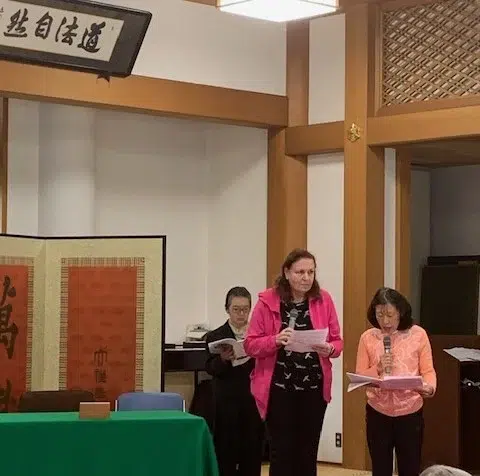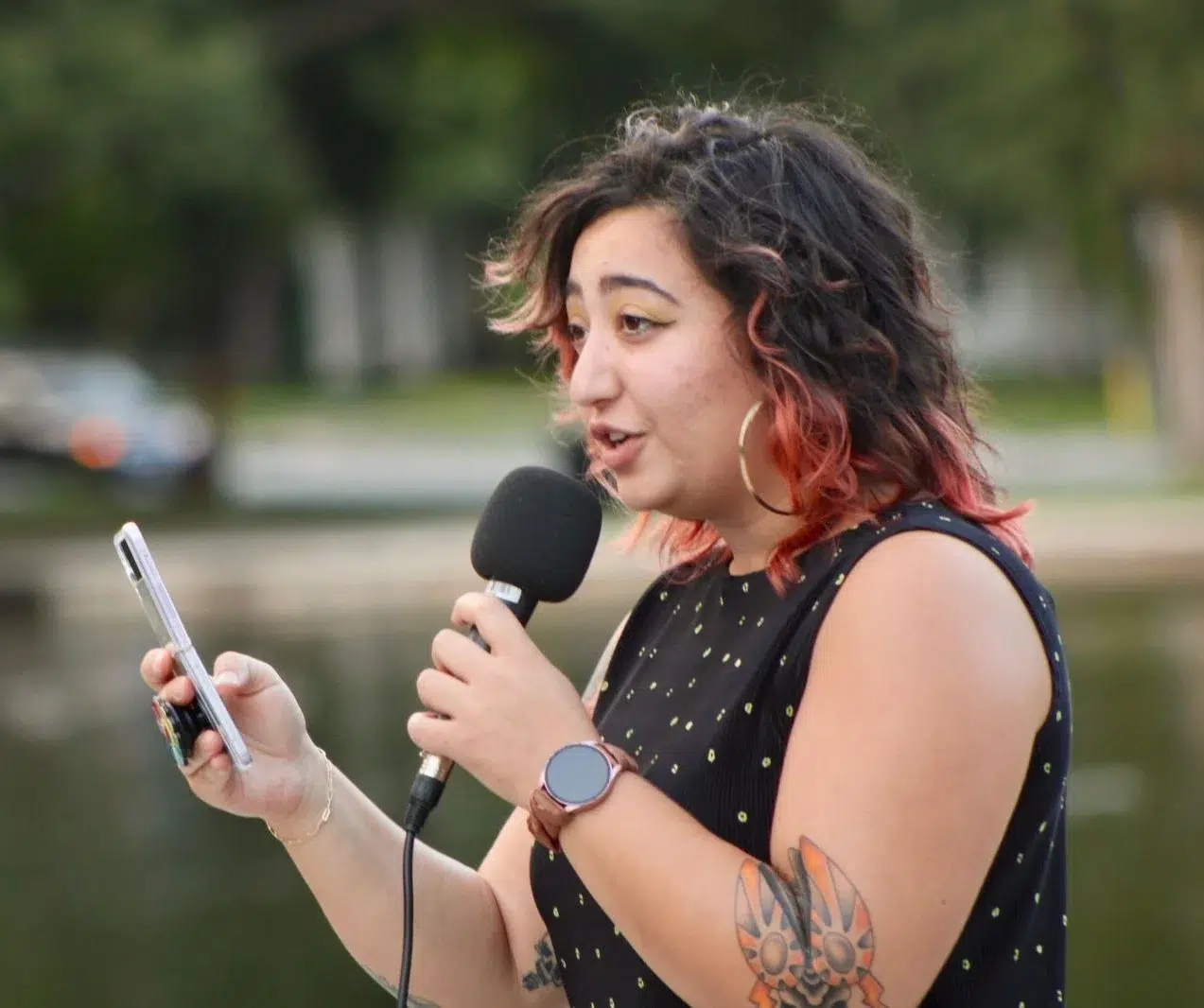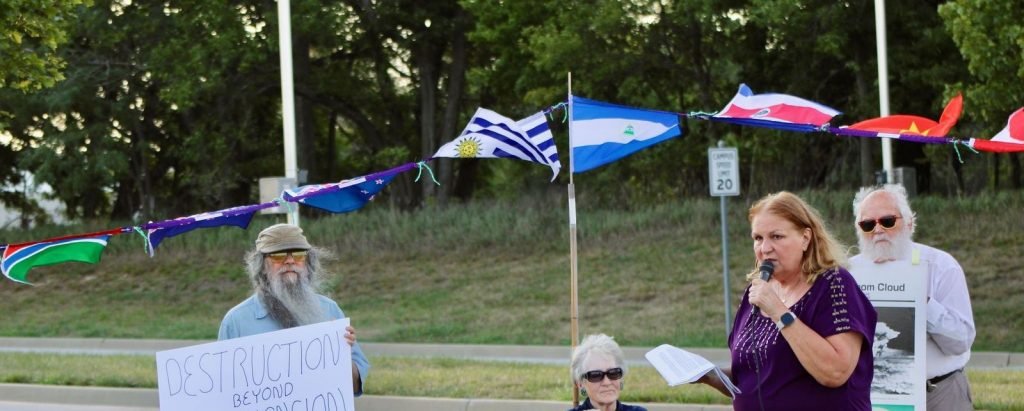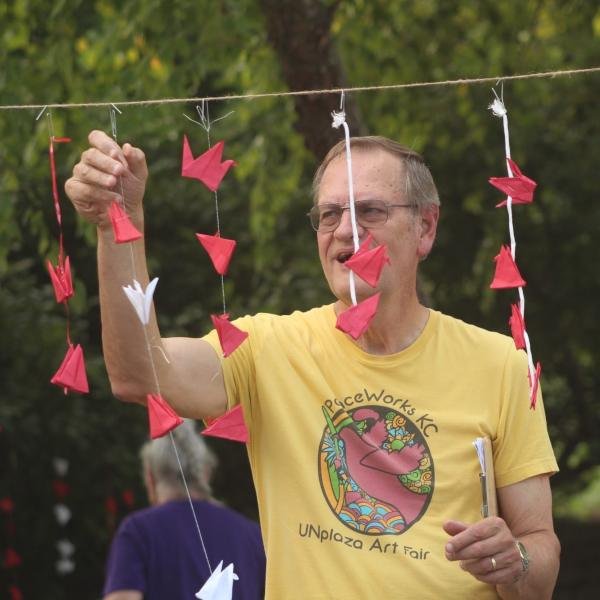
Ann Suellentrop, a vice-chair of PeaceWorks KC, is on pilgrimage to Japan, traveling with Pax Christi USA (Peace of Christ USA) to Kyoto, Hiroshima, and Nagasaki. The trip features meetings with hibakusha (survivors of the 1945 attacks on Hiroshima and Nagasaki) and their descendants. During the pilgrimage, participants give presentations about themselves and offer apologies for the 1945 US atomic bombings. Here is Ann’s speech March 6 in Kyoto, with pictures she took in the Kyoto area.
My name is Ann Suellentrop. I am a pediatric nurse, retired after having cared for children for 45 years. I come from Kansas City, which is located in the exact middle of the United States. Kansas City is known as the “Heart of America.” But I think that we have a heart problem or heart disease (!) because Kansas City is home to a nuclear bomb plant, now called the National Security Campus! It is one of the 8 major sites that together make US nuclear weapons! Since 1949, Kansas City’s factory has made over 80% of the mechanical and electronic parts for US nuclear weapons. The Kansas City area is also the home of President Harry Truman, the one who ordered the atomic bombings of Hiroshima and Nagasaki. For this, I apologize deeply.

For many years, most people in Kansas City didn’t even know about this nuclear bomb plant, and many still don’t know, because the workers are told to keep it a secret. But unfortunately for them, these workers were unknowingly poisoned by the plant’s numerous toxic chemicals and radioactive materials. So many of them developed cancers and other serious diseases, many died early deaths, and many still continue to suffer to this day.
Fifteen years ago, I joined a local organization called PeaceWorks Kansas City. I started learning about Kansas City’s nuclear bomb plant, and I began protesting there with the group. I see this as my duty as a nurse to protect children and public health. I have been arrested three times for protesting by trespassing at the plant in civil disobedience. Last October, for the first time, a judge found me not guilty of the charge! Altogether over the last 15 years there have been about 200 arrests at the plant for nonviolent civil disobedience during our protests.
I now have some very bad news to tell you. Kansas City”s National Security Campus is planning to double in size this year and eventually hire as many workers as worked there during the Cold War: 9,000 workers! This huge expansion is happening because the US plans to spend $2 trillion dollars over the next 30 years to make all new nuclear weapons! This is an abomination, and we must resist! So we are inviting people from all over the US and internationally to come to Kansas City next month, April 12-15, for a weekend of learning about the nuclear bomb factory and protesting there.

We need a worldwide mass movement to convince our leaders to get rid of nuclear weapons before they get rid of us. Each person must do what they can to learn about the issues and do whatever they can to oppose them.
Nuclear weapons are capable of killing all life on earth. They are an insane death wish, and they rob us of the resources we need to solve global warming and to meet human needs that give us a happy, healthy life. There is a campaign in the US about this, called “Warheads to Windmills.” You can read more about it at: www.warheadstowindmills.org
Fifteen years ago, I joined two national organizations in the US. The first is the Alliance for Nuclear Accountability or ANA. It is a network of 30 organizations whose members live near the sites of nuclear weapons production and waste. We lobby Congress in Washington DC every spring against nuclear weapons and in favor of increased cleanup of the waste. In the fall, we travel to one of the nuclear sites to learn more about the local issues there.
The second national organization I joined is Physicians for Social Responsibility or PSR, and this year I was elected to their national board of directors. PSR is made up of thousands of members across the US—doctors, nurses, other health care workers, and lay people. We educate the public and elected officials about nuclear weapons and climate catastrophe, the two greatest dangers to public health. We know a nuclear war would destroy hospitals and health care workers, so our motto is “We must prevent what we cannot cure.” We have a campaign called “Back from the Brink” where we ask our elected city officials to pass a proclamation supporting steps to get rid of nuclear weapons; one step is adopting the Treaty on the Prohibition of Nuclear Weapons. I would like to present to you now a letter from the President of PSR, Brian Campbell. (See https://peaceworkskc.org/apology-from-physicians-for-social-responsibility/.)

Thank you.
(c) 2024, PeaceWorks Kansas City, Ann Suellentrop, Creative Commons Attribution Share-Alike 4.0 International License.













